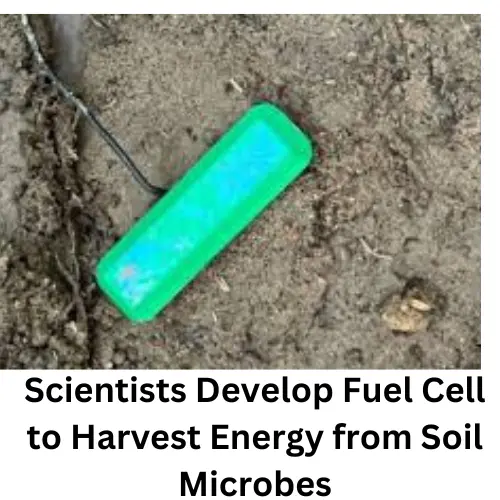Introduction
A latest scientific discovery has revealed that it is now possible to generate power from microbes in the soil using a new prospective fuel cell. What they have invented is a new type of fuel cell which is also referred to as the dirt powered or soil powered fuel cell; a truly environmentally friendly way of producing power. Still, this blog will provide an insight into its functionality and all the future uses it can be employed for, and why this technology is such a crucial step forward in the search for renewable energy sources.
Dirt-Powered Fuel Cell: A Natural Energy Solution
Innovation in energy technology is seen through the dirt-powered fuel cell more commonly known as the soil-powered fuel cell. This new fuel cell is far from another conventional battery that uses toxic and flammable chemicals; instead, it uses microbes in the soil to produce the energy. These microbes discharge electrons in the course of decomposition of organic matter, the electrons hence travel in the electrical circuit from anode to cathode thus producing power. This process can go on for eternity as long as there is organic carbon in the soil hence a continuous and renewable source of energy.
Soil-Powered Fuel Cell: A New Technology for Green Infrastructure
The soil-powered fuel cell is not just an example of science fiction; it is a viable tool that will shape future environmentally-conscious architectural designs as well as modern agriculture applications. As it draws current from the ground it can easily be installed in places where conventional powering equipment would not fit well. This makes it particularly useful for powering sensors and other low energy appliances in such regions or in the rural setting as in the case of an agricultural setting. Besides, there being no use of dangerous chemicals, the utilization of soil-powered fuel cell would help in minimizing the creation of electronic waste and pollution of the environment.
Soil Fuel Cell: Understanding the Mechanics
At its core, the soil fuel cell operates on a simple yet effective principle: What happens is that as organic matters in the soil undergo decomposition by microbes, the microbes let out electrons. These electrons are then collected and made to flow through circuit and that results in the generation of power. This work does not require the use of chemicals from outside, all that is used is the natural process that is normally present in the soil. This not only accrues to the sustainability of the soil fuel cell but also brings out the possibility of other biological processes to power the world.
Fuel Cell for Power Generation:
Fuel cells are those electrochemical cells which undergo conversion of chemical energy into electrical energy by using oxygen or other oxidizing agents. They are applicable in several forms of power generation such as; utility power stations, mobile power applications and transportation. The soil-powered fuel cell is even more interesting as a continuation of this technology, which uses soil microbes as a fuel. This approach is green and more sustainable compared to the conventional combustion based methods used in power generation that normally results in higher environmental footprint.
Which Liquid Fuel Could Be Used to Directly Power a Fuel Cell
Beyond soil-powered fuel cells, several liquid fuels can be used directly in other types of fuel cells, offering versatility and convenience:
- Methanol: Used in direct methanol fuel cells (DMFCs), methanol is a liquid at room temperature and can be easily stored and transported.
- Ethanol: Similar to methanol, ethanol can be used in direct ethanol fuel cells (DEFCs).
- Formic Acid: Used in direct formic acid fuel cells (DFAFCs), formic acid is another viable liquid fuel option.
- Hydrogen-Rich Liquids: Certain fuel cells use liquid fuels that release hydrogen when reformed, such as ammonia or liquid organic hydrogen carriers (LOHCs).
These liquid fuels provide a range of options for powering fuel cells, making them adaptable to various applications and environments.
Significances and Future Prospects
It is thus possible to conclude that the essence of soil-powered fuel cells is in the radical changing of the viewpoints regarding energy generation and distribution. From the above findings, it is evident that they are an organic form of batteries that can be considered as an improvement over conventional batteries as they are made from renewable and relatively more plentiful resource; soil as compared to the toxic and flammable chemicals commonly used to make batteries. Those chemicals are dangerous during usage and are also among the culprits behind the rapidly increasing e-waste when discarded. Fuel cells on the other hand use soil power whereby it is safer and more environmentally friendly as compared to the others.
In addition, its uses in green infrastructure and precision agriculture might help improve the effectiveness and sustainability of soil management. Such fuel cells embedded directly into the soil can be used to supply energy for sensors and other devices to facilitate observation of environment conditions and efficient use of resources without giving into the need for other forms of energy such as batteries.
Conclusion
The advancement of soil-powered fuel cells can be considered a major achievement towards finding efficient differences in energy. The beauty of this technology is that it exploits the nature’s natural ability to decompose matter through microbial activities in soil as a source of energy. Therefore, it can be concluded that with further research and development in technology, there will be every possibility of a new epoch and new and innovative kind of energy filled future for the people, powered by a humble substance such as the soil.
